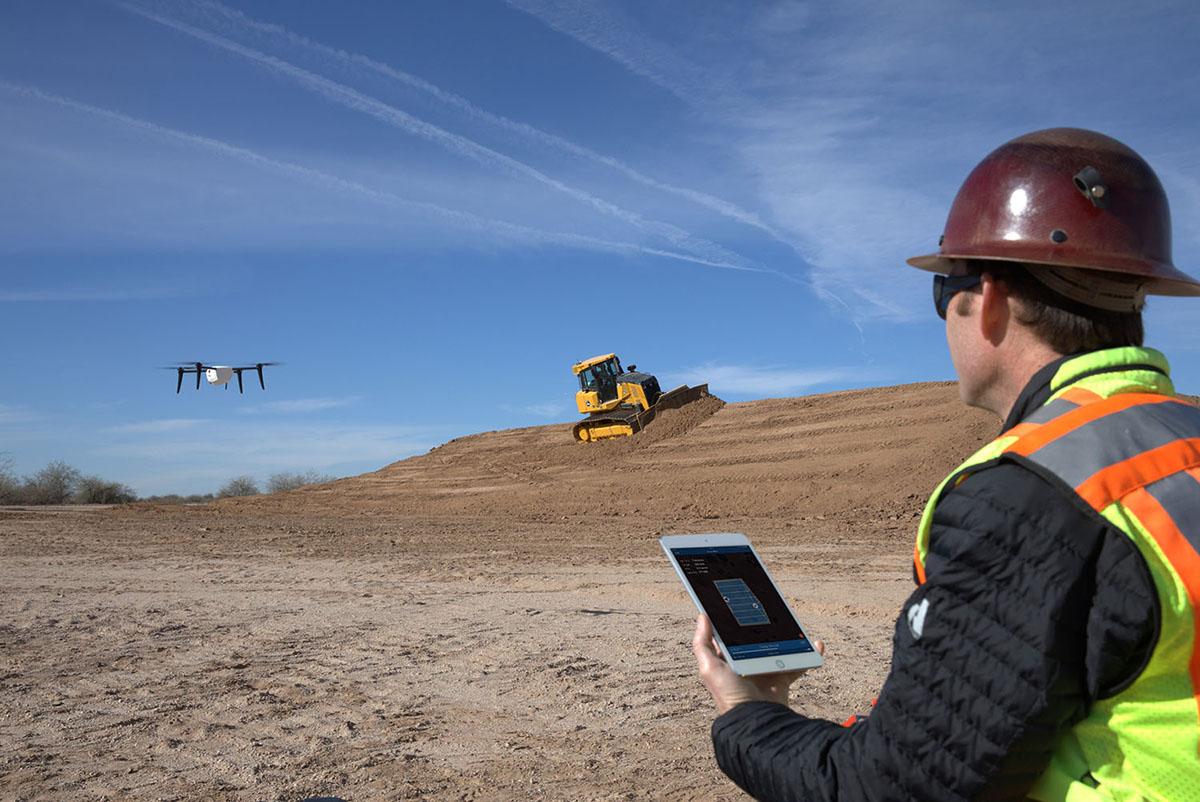The potential around how drones can change the way professionals in mining and construction approach a project are both numerous and powerful. Drones can do anything from provide a simple aerial to influence the scheduling for an entire project. UAV technology can make countless tasks more efficient and safer, but what does it actually mean for users to integrate the technology in order to see those differences?
Challenges around adoption have come up in various contexts for various professionals, partly because users are sometimes forced to piece together their own drone solution and then take the time to determine how to appropriately leverage the technology. It’s a process that can be a bridge too far for organizations determined to quantify the ROI of an investment in the short term.The strategic alliance between John Deere and Kespry is in many ways a direct endeavor to bridge that chasm between the technology and users. The alliance will allow John Deere dealers to provide Kespry solutions to their customers, and the fact that the Kespry solution is one that doesn’t need to be pieced together by those users is something Kespry vice president of marketing David Shearer called out as being a significant and critical aspect of this development.“John Deere knows their customers very well, and they knew they needed a drone solution that they could quickly and easily bring into their workflow,” Shearer told Commercial UAV News. “It couldn't require lots of additional training or create breakpoints in integrations between a service provider and hardware provider that can often happen when you're trying to figure out a drone solution from component parts. The Kespry solution takes all of that pain away.”A key aspect of this news is how the Kespry solution will be able to integrate with John Deere WorkSight, which is a suite of easy-to-use technology solutions that are designed to optimize machines, uptime and jobsites. The company put together a great infographic that details what Worksight is, how it works and why you need it. You can also watch a video that provides an introduction to this suite of technology solutions.Suffice to say, John Deere is dedicated to providing their customers with the latest technology solutions that can and will influence their productivity. Allowing them to quickly and easily leverage drone technology within this ecosystem was critical. However, it’s not just the technical logistics that are notable about this news since it will also address other areas that often cause problems for new and even experienced drone operators.“In order for a John Deere dealership to be able to sell the Kespry solution to their customer base, they have to be Kespry certified,” Shearer continued. “That means they have gone through training and they've been educated around where that value can be found for the customer. Customers that walk into a John Deere dealership won’t be presented with a Kespry solution without really understanding what they're getting from someone who knows what they're talking about.”Part of that process includes helping users sort through what it means to operate legally, and that can be intimidating to anyone unfamiliar with FAA regulation or Part 107. Kespry will help users get qualified to meet FAA standards and support them to make sure that doesn't become a hurdle.It’s a critical issue since it means that chasm between the potential of these tools and their actual application is being bridged. Integrating a drone into a workflow that’s already defined or being used represents something very different than a solution that needs to be pieced together. What’s more, drone integrations that specifically makes sense to professionals in this industry represents a distinction that’s being felt right now.“We already have John Deere customers asking about how they can buy and use Kespry in their workflow,” Shearer said. “John Deere’s Worksight solution already has an impressive amount of technology built into it, so the company clearly understands what level of technology their customers are comfortable using. We’re providing an end-to-end drone solution that is easy for them to get up and running with so they can take advantage of the data.”The Kespry Drone 2s flies autonomously, without manual piloting, and uses sensors to avoid obstacles, which are all features that are set to open up opportunities within the John Deere ecosystem. What will it mean for users to effectively capture, analyze and share business insights in light of data captured by a drone? It’s something we’ll continue to see and explore in 2017 as the approach professionals can take around construction projects of all sizes continues to evolve.
















Comments